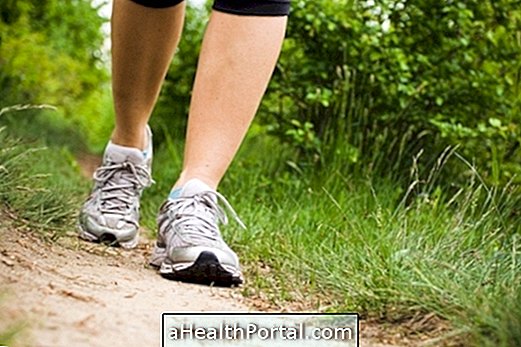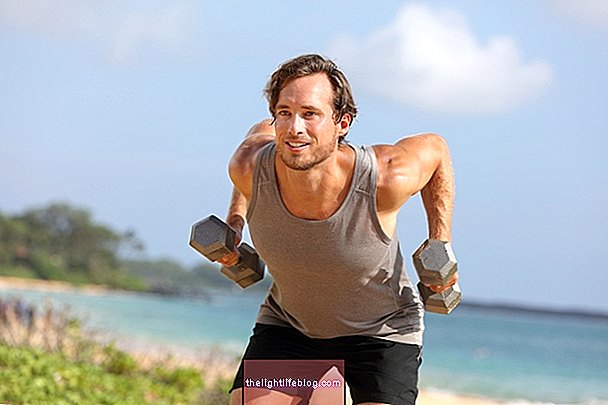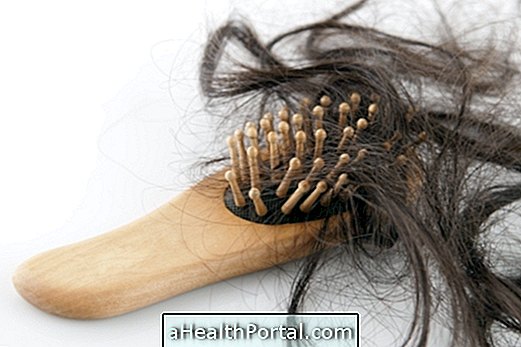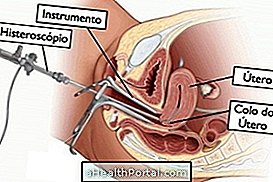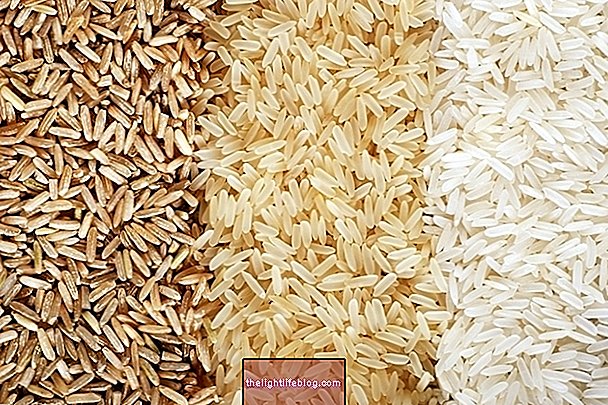Training triceps at home is simple, easy and helps to achieve different goals, from toning, decreasing flaccidity, increasing muscle volume to improving elbow support, flexibility and arm strength and should be added to the exercise routine. weekly.
Exercises for the triceps can be done with or without the use of weight, however it is important to take into account the physical conditions and limitations of the body to avoid any type of injury such as rupture of the triceps or tendonitis, for example. That is why you should warm up before exercising, being a good option to move your arms up and down alternately, several times at a fast pace or to do jumping jacks, for example.
The ideal is to do a medical evaluation before starting any physical activity and have guidance from a physical educator who must indicate the weight for each exercise individually.
How to do the triceps workout
The triceps training at home can be done 2 to 3 times a week, in 2 to 3 sets of 10 to 12 repetitions, depending on the exercise. The ideal is to choose 3 to 4 exercises per workout.
Some exercise options for doing a triceps workout at home are:
1. Triceps on the bench

The triceps on the bench helps to work the strength and endurance of the triceps, in addition to the muscles of the shoulders, back and core, which helps to strengthen these muscles and improve balance and posture. To do this exercise it is not necessary to use weights, just a chair or bench.
How to do it: take a chair or bench, sit on the bench and place your palms on the seat, close to your thighs. Keep your arms in the seat and move your body forward, with your legs straight. Bend your elbows, lowering your body as far as you can until your elbows form a 90 degree angle, supporting your body weight on your arms. Push the body upwards to start the movement again. Do 3 sets of 10 to 12 repetitions. If the exercise is very difficult, you can do it with your knees bent and bring your feet close to the body to perform the up and down movements.
2. Standing triceps extension

The standing triceps extension works with the strength of the triceps, deltoids and trapezius and must be done using weight as a dumbbell or, if you do not have it, you can place one or more 1 kg packages of rice or beans inside a backpack, or use a pet bottle with sand inside, for example.
How to do it: standing with your feet hip-width apart, hold the weight with both hands behind your head, with your elbows bent, forming a 90 degree angle. Lift the weight by stretching your arms upwards and lower your arm backwards slowly. It is important to keep your abdomen tight and your back straight.
The movement should be done by inhaling the air when the arms are behind and exhaling when climbing with the arms. If it is difficult to do the exercise while standing, you can do it sitting, as long as care is taken to keep the spine straight. Another variant of this exercise is to use a weight on each hand. This exercise can be done in 2 to 3 sets of 10 to 12 repetitions.
3. Lying triceps extension

The stretch of triceps lying down is another good option for triceps, as it works strength, endurance, in addition to stimulating the increase in muscle mass and volume. To achieve these goals, weights such as dumbbells, barbells or pet bottles with sand inside, for example, should be used.
How to do it: lie on the floor and slightly bend your legs so that your feet are flat on the floor. Hold a weight in each hand, stretch your arms up towards the ceiling. Then, bend your elbows back until your hands with the weights are close to your shoulders. Return to the starting position. Repeat this movement 10 to 12 times, doing 2 to 3 sets.
4. Triceps recoil

The triceps kick is an exercise that helps to gain strength and muscle mass in this region and should be done with the use of weight as a dumbbell or pet bottle with sand, for example.
How to do it: stand up with your knees slightly bent and lean forward with your back straight. Hold the weight with one hand and position the stretched arm in line with the body. Bend the arm that holds the weight forward, at an angle of 90 degrees at the elbow. Another way to do this exercise is to hold a weight in each hand and do the movement with both arms at the same time. If it is difficult to do the standing movement, you can support one knee on a bench or chair, for example. Repeat this movement 8 to 12 times and repeat with the other arm. This exercise can be done in 3 to 4 series.
5. Lateral arm elevation

The lateral elevation works on the strength and resistance of the triceps, in addition to the shoulder muscles helping to maintain posture and balance. This exercise should be done with the use of weight as dumbbells and, if you don't have them, you can use a pet bottle with water or sand or backpacks with 1 or 2kg of rice or beans in each one.
How to do it: stand up, spread your legs shoulder-width apart and bend your knees slightly. Hold a weight in each hand, with your arms aligned to your body. Slowly raise your arms to shoulder height and slowly return to the starting position. It is important to contract your abdomen, inhale while your arms are aligned with your body, and exhale when you raise your arms. Do 2 to 3 sets of 10 to 12 repetitions.
6. Inclined arm flexion

Inclined arm flexion is an exercise that helps to work the strength and resistance of the triceps, biceps and deltoids.
How to do it: take a surface to create the inclination of your body such as stool, chair, puff, gym ball or a step exercise platform. Support your hands on the inclined surface, with your arms aligned to your body, a little more than shoulder width and feet on the floor. The body should be straight with the back aligned with the torso. Contract your abdomen, flex your elbows until your chest touches the surface and return to the starting position. You can do 2 to 3 sets of 8 to 10 repetitions each, resting from 60 to 90 seconds between sets.
7. Forearm plank

The forearm board is considered a complete exercise, as it works the triceps, abdomen, core and other muscles of the body such as the biceps and shoulders. In this exercise it is not necessary to use weights or dumbbells.
How to do it: lie on your stomach and then raise your body, supporting only your forearms and toes on the floor, always with your abdomen and buttocks contracted and your head and body straight, aligned with your spine. You should stay in this position for as long as possible. You can start with 30 seconds and gradually increase the time. This exercise is not done in series.
What to do after training
After triceps training, stretching should be done to help relax the muscles, tone the muscles, improve flexibility, increase circulation and prevent injuries.
1. Horizontal stretching

The horizontal stretch should be done in a standing position to allow the triceps to stretch well, increasing the flexibility and range of arm movements.
How to do it: standing, with your legs shoulder-width apart and your knees slightly bent, place your right arm across your body, at shoulder height. With your left arm, hold your right arm in this position by pressing your right arm across your chest. Hold this position for 30 seconds and repeat with your left arm. You can do 3 to 4 repetitions for each arm.
2. Stretching over the head

This stretching, allows to stretch the triceps, chest and spine, and must be done standing or sitting.
How to do it: raise one arm and bend your elbow, placing your hand towards your back or the back of your neck. With your other arm, pull your elbow toward your head to stretch your triceps. Do this movement for 20 to 30 seconds. Repeat with the other arm. This exercise is not done in series.
Was this information helpful?
Yes No
Your opinion is important! Write here how we can improve our text:
Any questions? Click here to be answered.
Email in which you want to receive a reply:
Check the confirmation email we sent you.
Your name:
Reason for visit:
--- Choose your reason --- DiseaseLive betterHelp another personGain knowledge
Are you a health professional?
NoMedicalPharmaceuticalsNurseNutritionistBiomedicalPhysiotherapistBeauticianOther
Bibliography
- GEHM, David G .; CHAOUACHI, Anis. A review of the acute effects of static and dynamic stretching on performance. Eur J Appl Physiol. 111. 11; 2633-2651, 2011
- HOTTA, Kazuki; et al. Daily muscle stretching enhances blood flow, endothelial function, capillarity, vascular volume and connectivity in aged skeletal muscle. J Physiol. 596. 10; 1903–1917, 2018


